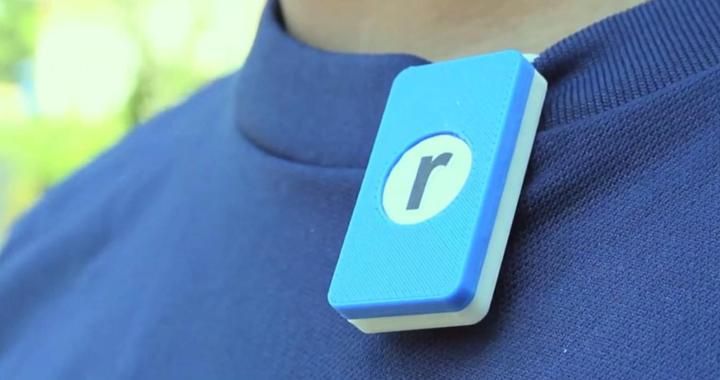
Currently seeking $30,000 in funding on Dragon Innovation, the Run-n-Read fitness gadget allows indoor runners to read text on a tablet while their head is bobbing up and down when running on a treadmill. Designed to be clipped to a headband or the top of a t-shirt, the small device tracks the motion of your body and mirrors that motion in real-time on an iOS or Android mobile device like a tablet. While someone standing still wouldn’t be able to read the tablet due to the constantly moving text, it looks as if the text is completely still to the runner.
In addition to the treadmill, the Run-n-Read can be used when working out on other gym machinery such as an elliptical machine, a stair machine or a stationary bike. While head motion on a stationary bike is minimal compared to motion when running, it’s still enough to be slightly annoying and force the reader to continually reset the position of their eyes on the page. The creators also recommend using the device when commuting on public transit.
In addition to reading books while working out, the software also supports mobile websites. Rather than having to continually touch a tablet to change the page when reading, the Run-n-Read offers a gesture control system for page turning. Tapping the Run-n-Read once turns the page forward and tapping it twice in succession flips back one page.

The Run-n-Read device accomplishes motion tracking and device mirroring using a similar type of accelerometer that’s found in a smartphone and a low-powered Bluetooth module to connect directly to the mobile device. Regarding battery power, the Run-n-Read can run for up to twenty hours on a single charge and can be recharged easily via USB. While not as comprehensive as a Fitbit tracker, the Run-n-Read also collects fitness data related to distance walked, steps taken and calories burnt during a workout.
According to the creators of the Run-n-Read, the refresh rate between the gadget and the iOS or Android mobile device is 60 frames per second. It’s compatible with Android devices utilizing Android 4.3 or later, the iPhone 4S or later, the iPad Mini, the iPad 3rd generation or later and the iPod Tough 5th generation or later. Regarding design, it will be available in four colors; blue, pink, green and red.
At this stage of development, the creators of Run-n-Read have a working prototype and are optimizing the mobile device connection. Assuming the product receives full financial backing through the crowd funding process, the creators will setup the supply chain and start production on the final units. There are multiple backing levels for the project ranging from $55 for the base unit to more expensive levels that include accessories such as t-shirts and headbands. Regarding delivery of the device, the more expensive backing levels will receive the Run-n-Read during December 2013 and other levels will are currently slated for January 2014. As with any type of crowd funded project, be aware that manufacturing issues can cause shipping delays for weeks or even months beyond the original target date.


